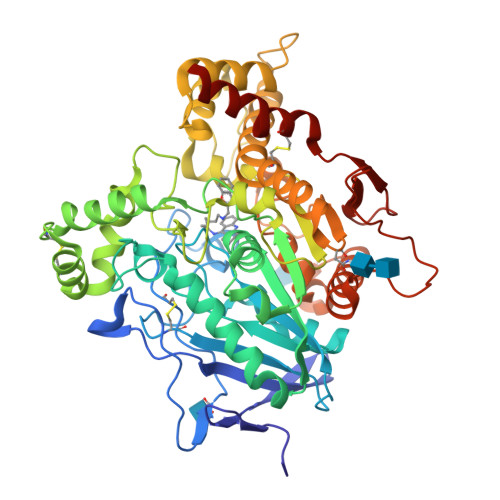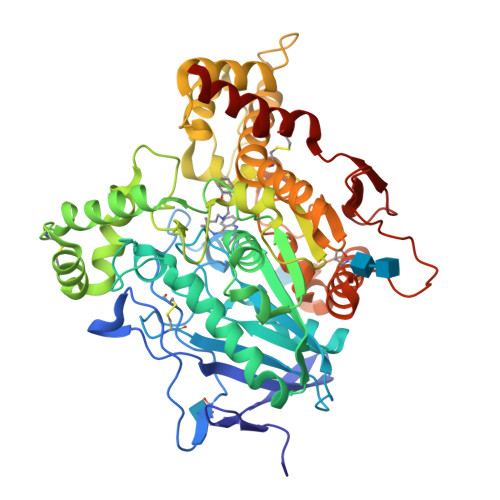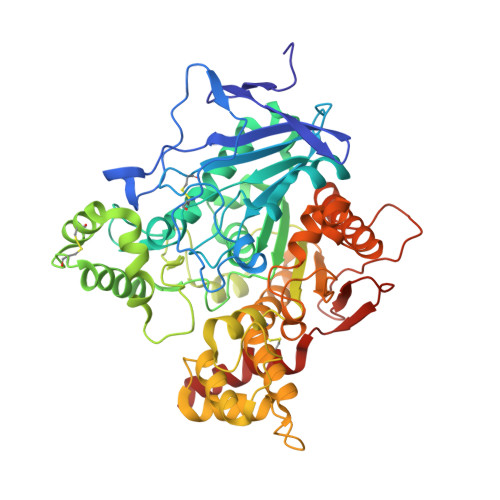Novel Tacrine-Benzofuran Hybrids as Potent Multitarget-Directed Ligands for the Treatment of Alzheimer's Disease: Design, Synthesis, Biological Evaluation, and X-ray Crystallography.
Zha, X., Lamba, D., Zhang, L., Lou, Y., Xu, C., Kang, D., Chen, L., Xu, Y., Zhang, L., De Simone, A., Samez, S., Pesaresi, A., Stojan, J., Lopez, M.G., Egea, J., Andrisano, V., Bartolini, M.(2016) J Med Chem 59: 114-131
- PubMed: 26632651
- DOI: https://doi.org/10.1021/acs.jmedchem.5b01119
- Primary Citation of Related Structures:
4W63 - PubMed Abstract:
Twenty-six new tacrine-benzofuran hybrids were designed, synthesized, and evaluated in vitro on key molecular targets for Alzheimer's disease. Most hybrids exhibited good inhibitory activities on cholinesterases and β-amyloid self-aggregation. Selected compounds displayed significant inhibition of human β-secretase-1 (hBACE-1). Among the 26 hybrids, 2e showed the most interesting profile as a subnanomolar selective inhibitor of human acetylcholinesterase (hAChE) (IC50 = 0.86 nM) and a good inhibitor of both β-amyloid aggregation (hAChE- and self-induced, 61.3% and 58.4%, respectively) and hBACE-1 activity (IC50 = 1.35 μM). Kinetic studies showed that 2e acted as a slow, tight-binding, mixed-type inhibitor, while X-ray crystallographic studies highlighted the ability of 2e to induce large-scale structural changes in the active-site gorge of Torpedo californica AChE (TcAChE), with significant implications for structure-based drug design. In vivo studies confirmed that 2e significantly ameliorates performances of scopolamine-treated ICR mice. Finally, 2e administration did not exhibit significant hepatotoxicity.
Organizational Affiliation:
State Key Laboratory of Natural Medicines and Jiangsu Key Laboratory of Drug Screening, China Pharmaceutical University , 24 Tongjiaxiang, Nanjing 210009, P. R. China.





















